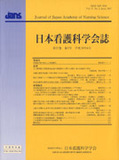Japanese
English
- 販売していません
- Abstract 文献概要
- 参考文献 Reference
- サイト内被引用 Cited by
要旨
本研究は,人工股関節全置換術(THA)後患者の日常生活における脱臼回避動作の特性を明らかにすることで,患者指導の指針を得ることを目的とした.研究方法は,脱臼回避動作の典型例(床の上のモノを拾う,ズボンをはく)を選択し,三次元動作解析・三次元加速度計測により,THA後患者6名と健常者5名の動作を比較し,脱臼回避動作の特性を分析した.
動作分析の結果,健常者に股関節の過屈曲と内転,体幹の前傾が著明であった.一方,THA後患者では股関節の屈曲制限,過屈曲に伴う外転,体幹の後傾による脱臼回避動作が認められた.THA後患者の椅子を用いた動作に,股関節の屈曲制限や身体加速度の低下がみられたことから,上手な道具の活用が,身体面への負担の軽減と,安全にできる動作の拡大につながることが確認された.本研究の結果から,THA後患者においては,対象の居住環境や生活動作の特性を踏まえた個別指導の重要性が示唆された.
Abstract
This study aimed to obtain guidelines for patient education by clarifying characteristics of dislocation aversion movements (DAM) in daily life for patients after total hip arthroplasty (THA). Two movements, “wearing pants” and “picking up objects from the floor” were chosen as representative examples of movements to prevent dislocation, and these movements were analyzed for 6 THA patients and 5 healthy volunteers using 3-dimensional movement analysis and 3-dimensional acceleration instrumentation to extract differences.
Movement analysis demonstrated that adduction with hyperflexion of hip joints and forward tilting of trunk were usually seen in normal individuals, whereas restriction of flexion, abduction with hyperflexion of the implanted hip joint and backward tilting of trunk were commonly seen as DAM in THA patients. Furthermore, accelerated velocity of each movement was controlled at a low level for THA patients using some devices expanding their DAM as compared to that for normal individuals. In conclusion, characteristics of dislocation aversion movements do exist in THA patients and differ between patients, suggesting a necessity for learning systems for each patient by understanding living habits and activities of daily living.
Copyright © 2007, Japan Academy of Nursing Science. All rights reserved.


